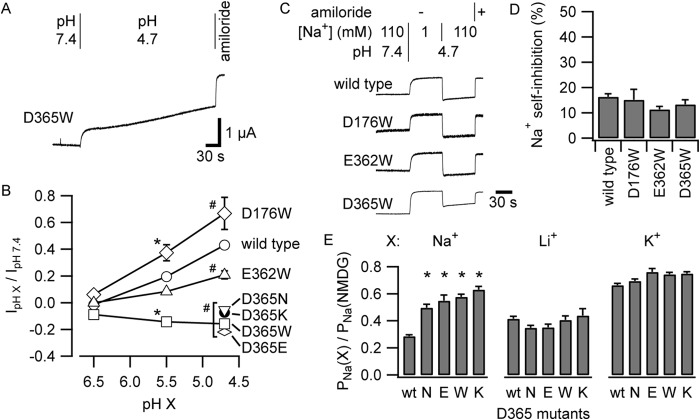FIGURE 6.
αAsp-365 mutants lack acid-dependent channel activation. A, acidification inhibits αD365W currents. B, effects of pH titration on the wild type and select mutants of acidic residues in the acidic cleft. Each experiment was performed as in Figs. 1A and 6A while varying the final pH. The acute amiloride-sensitive change in current upon acidification to pH 6.5, 5.5, or 4.7 was quantified. For experiments in which currents increased as a result of acidification, we used the maximal increase in current, which occurred at 10 ± 1 s after initiating solution exchange (Fig. 1A). For experiments in which the current decreased as a result of acidification, there was no transient nadir because both the fast and slow phases of the change affected the current in the same direction (A). For quantification of the acute effect of changing pH on current, we used the current value at 10 s after initiating solution exchange. *, p < 0.01 versus the wild type at pH 5.5; #, p < 0.005 versus the wild type at pH 4.7. For all groups, n = 5–8. C, acidification weakens Na+ self-inhibition. Shown are representative current recordings of oocytes expressing the wild type or α subunit mutants and voltage-clamped at −100 mV. Solutions were exchanged rapidly as indicated. D, Na+ self-inhibition was quantified at pH 4.7 as for Fig. 1E. No significant differences were detected (n = 5–8). E, experiments were performed as described for Fig. 3. PNa values where Na+, Li+, or K+ were the principal cation were normalized to PNa determined in NMDG+. *, p < 0.003 versus the wild type (n = 40 for the wild type and 5–8 for mutants).

